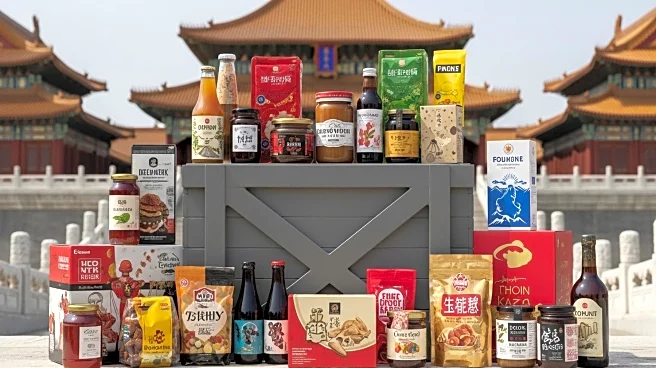What's Happening?
The U.S. soybean market is experiencing a surge in sales to 'unknown destinations,' with 1.68 million tons sold by August 2025. This has sparked speculation about covert transactions, particularly involving China, which has historically been a major importer of U.S. soybeans. The absence of Chinese pre-purchases and Brazil's expanding soybean acreage have driven U.S. soybean prices below $9 per bushel, threatening farmer profitability. The situation highlights the fragility of global agricultural markets amid shifting trade alliances and policy uncertainty.
Why It's Important?
The mystery surrounding U.S. soybean exports underscores the volatility in global commodity markets. The lack of transparency in buyer identities creates uncertainty, affecting market stability and pricing. U.S. farmers face economic challenges due to low soybean prices, exacerbated by competition from Brazil and Argentina. The situation could impact U.S. agricultural policy and trade relations, particularly with China, which remains a key player in the global soybean market. The dynamics of soybean exports are crucial for understanding broader trends in international trade and agricultural economics.
What's Next?
The U.S. soybean market may experience further volatility as stakeholders seek clarity on the identity of 'unknown destination' buyers. Potential reclassification of sales as Chinese purchases could influence market dynamics and pricing. U.S. farmers and industry groups may advocate for policy changes to address the economic impact of low prices and competition from Brazil. The situation may also prompt discussions on trade relations and agricultural policy, particularly in the context of U.S.-China relations and global commodity markets.
Beyond the Headlines
The ambiguity in soybean export destinations raises ethical questions about transparency and market manipulation. The potential involvement of China in covert transactions highlights the complexities of international trade and the strategic maneuvers countries may employ. The situation also reflects broader geopolitical tensions and their impact on agricultural markets, emphasizing the need for robust trade policies and international cooperation to ensure market stability and fairness.












